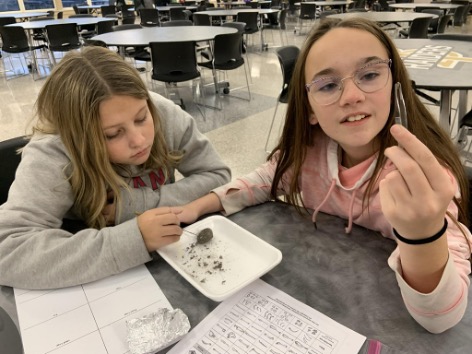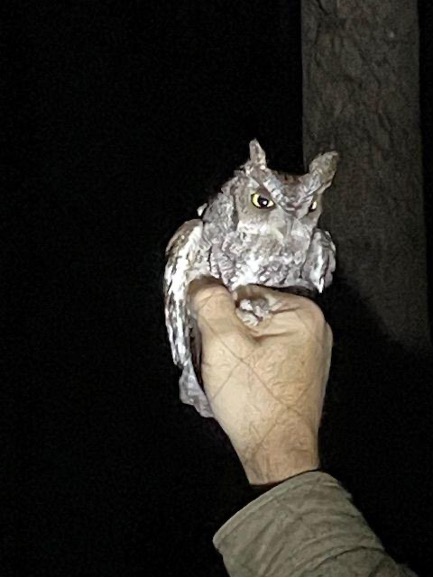Owls have fascinated humans for millennia. Last month, the Environmental Science Club was treated to a closeup look at owls by Dr. Blake Mathys, associate professor of environmental science at Ohio Dominican University. Dr. Mathys, a Benjamin Logan graduate, invited the group to his property near West Mansfield to learn about Ohio owl species and his research, the Central Ohio Owl Project, focusing on three lesser encountered Ohio owls, the Northern Saw-whet, the Long-eared Owl, and the Barn Owl. The ESCers were also able to observe the bird banding process, whereby owls are captured in mist nets and ringed with a band around their leg. Each band is marked with a unique number that connects the bird to data collected at the time of capture. The process is not harmful to the animal. Dr. Mathys works under federal and state permits.
As a follow up, last week the ESC met to learn about owl adaptations such as their superb
hearing and nearly silent flight. Along with sharp talons, and a strong curved beak, these adaptations allow owls to fill their role in nature as predators. Although most owls are active at night, the students learned that some are diurnal (day active) while others are crepuscular (active at twilight). The ESCers also discovered that owls are negatively affected by pesticides in their environment, and that because they fly lower, are prone to vehicle collisions. Habitat loss, however, is the area of most concern for many species.
Following the slide show and discussion provided by the ESC leaders, the students dug into, literally, bird barf. Owl pellets are the undigested remains of prey animals consumed by owls. Bone, fur, and even hard insect parts are compacted into a pellet from the bird’s gizzard and ejected through the mouth several hours after eating. The pellets are collected and sterilized. Dissecting the pellets allowed the students to reveal bones that made it possible to identify prey species. The budding ornithologists worked intently at their task and were rewarded with numerous bits of the skeletons of voles and mice.
The Benjamin Logan Environmental Science Club is cosponsored by Benjamin Logan Local Schools and the Logan County Land Trust. It is coordinated by Benjamin Logan teachers Bruce Smith, Spencer Reames, and Ryan Kerns along with Bob Stoll from the Logan County Land Trust. Consider joining or making a contribution to the Logan County Land Trust.






